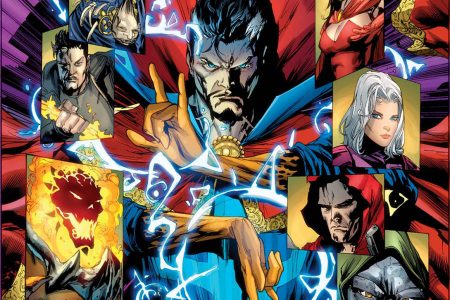Civil War #1–7 by Mark Millar and Steve McNiven
I know that I am coming to this very late – this was THE big book in the comic book corner of the internet when it came out – and I feel that I don’t even have to read it, after all the stuff I’ve seen about it and the various parodies. However, I felt I should actually read the thing for myself.
This is a BIG STORY – no subtlety, just plough through in blockbuster action movie style, with shotgun tactics and Big! Surprise! Endings! Namely, Captain America escaping SHIELD by surfing on a plane in the first issue, Spider-Man unmasking at the end of issue two, the return of Thor at the end of three, the new Thunderbolts team at the end of issue four, Punisher and the Negative Zone jail in issue five, and the big face-off moment at the end of issue six (although with the crappest last line ever from Captain America: ‘Now close your eyes, gentlemen. This might hurt.’ What the fuck does that even mean, let alone in that context? Shudder).
The real strength in this series, apart from Millar’s commitment to the over-the-top attitude all the way through, is McNiven’s art. He is perfect for this type of story. He is a top-quality superhero artist – strong, clean faces; a good handle on the costume as outfit mixed with the muscles underneath (or the pert buttocks of females – he does suffer from the modern artist problem of over-sexualisation of women, throwing in a few butt shots gratuitously into the story), which is necessary for the believability so that they don’t look like a second skin; a heroicness to the heroes; and able to stage big fights in an accessible and understandable fashion. There is a distinctness to his characters that delineates them, especially in the large group shots. It’s dynamic and yet captures the best moment in time to represent the idea of the panel – the single page of Hercules bashing Clor in the head (‘Thou art no Thor.’) is very cool. The only time I was taken out of the story due to the art was the panel of Stature’s face in issue four where she is basically Sarah Michelle Gellar.
Not that you’ll need reminding but the plot of the story: Speedball’s reality show New Warriors lead to Nitro blowing up Stanford and killing hundreds of civilians, which leads to legislation for registration of heroes. This causes a split in the two camps: Captain America and the more ‘street-level’ heroes against the legislation, and Iron Man, Reed Richards and Hank Pym leading the group supporting the initiative.
An aside. The X-Men are on the sidelines and don’t choose sides. This isn’t really explained – there is a lot going in the book that isn’t fully explained, as if it doesn’t have enough time to give the reader the complete information to understand everything. Also, there seems to be parts that are explained in books outside of the main series, so that it feels it needs only to use shorthand – why Peter flips from being a supporter of the legislation to being against it; the reveal of the Negative Zone as the prison; the new Thunderbolts; the status of the X-Men – which makes for an unsatisfactory read in one sitting.
The series succeeds in feeding the inner fanboy – issue three has the first big smackdown, where the heroes fight each other and your inner child smiles. Millar has gone for moments rather than actual story – Goliath being killed by the cloned Thor; Spider-Man switches sides and is saved by the Punisher; Sue leaves Reed because he is an arsehole, but not without shagging him first – but he just about gets away with it. This isn’t a great piece of literature, it is a story about the Marvel Universe with an attempt at relevancy thrown in on which to hang the superheroes fighting each other. The double-page spread of the big face-off at the end is the stuff of a Marvel zombie’s dreams. Then having Namor turn up with his army (even if he doesn’t have much effect) and the fake Thor’s death, and you’ve got a lot of happy fanboys.
Well, until the end, which is so anti-climactic that you have to read it again to make sure that you’ve read it right, no matter what Joss Whedon felt about it. The big story limps home to the new status quo for the Marvel Universe. It has to be said that Tony Stark and Reed Richards do act like dicks, not like the characters we have been accustomed to for, oh, ever. The effect on the whole of the Marvel output is quite drastic, so I hope it doesn’t get ‘wished’ away by the Skrull invasion that is coming up. (I thought that mother of the dead child might be voodoo-ing Tony when she spat on him in at the funeral, and always seems to be around, but that seems a flimsy villain.) So, the story is BIG, the result is BIG, the ending is small, but the art is gorgeous. In other words, the typical Marvel comic.




